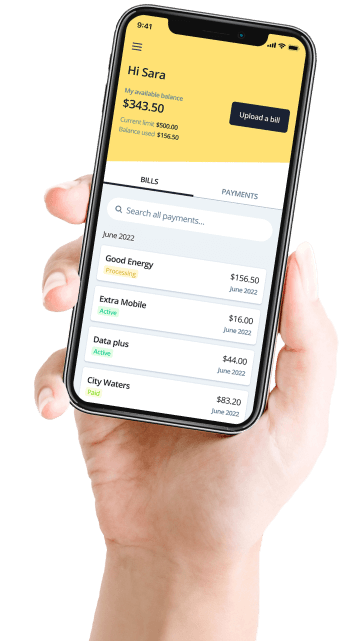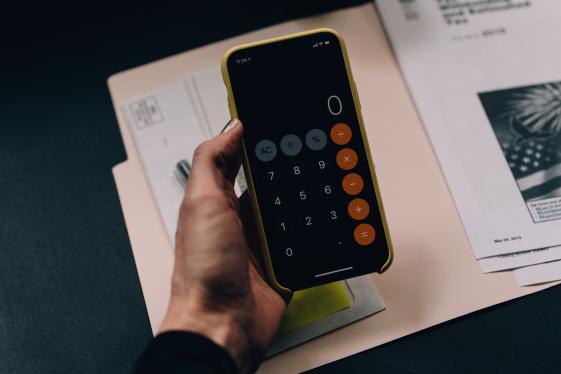Discover proven strategies to lower your electric bill and reduce energy costs. Learn practical tips for cutting usage, energy-efficient devices worth investing in, and flexible bill payment options.
Learning how to save on your electric bill can help you cut energy costs by hundreds of dollars annually. With electricity usage increasing 4% to 7% every year for the average American household, finding effective strategies to lower your electric bill has never been more important.
Your electricity bill is calculated in kilowatt-hours (kWh), with each kilowatt-hour representing 1,000 watts used for one hour. The more electricity your appliances consume, the higher your energy bill climbs.
From heating and cooling systems to everyday electronics, understanding which devices drive up your electricity costs is the first step to reducing your bill.
This comprehensive guide reveals practical tips to lower your electric bill, identifies the biggest energy wasters in your home, recommends energy-efficient devices that deliver long-term savings, and answers common questions about electricity costs - helping you take control of your energy expenses without sacrificing comfort.
Why is my electric bill so high?
Wondering why your electric bill is so high? High electricity bills typically result from inefficient appliances, poor energy habits, or outdated equipment. Understanding why your electric bill is high is the first step to lowering your electricity costs. Common culprits include leaving electronics on standby, overusing heating and cooling systems, and running major appliances inefficiently. By identifying what’s driving up your electric bill, you can implement targeted strategies to save on electricity and reduce your monthly energy costs significantly.
Outside mortgage or rent, utility bills tend to be one of the more expensive costs for a household. And with electricity demand at its highest in winter and summer, it’s not uncommon for the average household to experience a little bit of bill shock.
Between your provider increasing rates to leaving your air conditioning on overnight, there are a number of reasons why your electricity bill is high. Most of the time, the culprit for a high electric bill are overusing appliances or silly energy habits.
We’ve jotted down some of the most common reasons your electric bill might be high and how you can prevent it from happening again.
Don’t leave electronics on standby
From the kettle to the desktop, we’re all guilty of leaving our appliances plugged in or on standby. But did you know that this little laziness could be contributing to your annual electricity bill? Even though you might not be using these appliances, if they are still switched on and plugged into the wall, it’s guzzling energy!
Before heading off to bed each night, do a quick scan of your appliances and switch off those that don’t need to remain plugged in. While it might be a new habit to get used to, it’s a sure-fire way to save a few dollars!
Lower your appliance usage
Major household appliances like dishwashers, washing machines, and dryers consume significant electricity. In fact, the average American household does approximately 300 to 400 loads of laundry annually[2], with each full load using about 40 gallons of water!
One solution to minimize your usage of these appliances is to only use them when they’re at maximum capacity. This means only using your dishwasher or washing machine for full loads and avoiding using your dryer and hanging your clothes out to dry instead.
Overusing your lighting and fans
A common poor energy habit in most households is leaving the lights and fans on when no one is using them, which leads to unnecessary electricity use. Regularly misusing your lighting and fans can also be an energy waster. But like any other bad habit, the only way to kick it is by replacing it with a better one.
Try to keep your lighting use to a minimum during the day and double-check you’re only lighting the rooms you need to at night. It’s also a good idea to turn off fans in rooms people aren’t using.
Another simple way to cut your lighting expenses is to switch all your bulbs to LED energy-efficient ones. These use less electricity and tend to last longer than regular light bulbs.
Tips to lower your electric bill
Whether you’ve been recently hit with a high energy bill or are looking for a challenge to reduce costs, there are a few tips you can put into practice to lower your annual electric bill. While there are some charges we can’t escape on our electric bill, we can make the effort to drastically reduce our usage.
That’s why our quick tips are all about ways to cut back, from your air conditioner to the way you take your showers.
Lower your heat and AC bill
For a lot of us, getting through the warmer or chillier seasons means having to keep your heating and cooling on almost all day.
If this sounds like your household, then it might be worth giving it a makeover by replacing or repairing any faulty ducts. This improves the appliance’s efficiency and ensures it’s not using any excess electricity to run, which could make a massive difference to your bill if you plan on running it for extended periods of time.
Another tip is to lower your thermostat by between 10 and 15 degrees when you’re not at home or asleep. According to the U.S. Department of Energy[3], doing this for eight hours could save you approximately 10% on your annual heating and cooling costs.
Lower your light bill
Although lighting makes up a smaller portion of your overall bill, it doesn’t mean it’s not worth switching things up. One simple trick to improve your light’s energy efficiency is to make the switch to LED light bulbs. Not only do these require less electricity to run, they tend to last longer than regular, incandescent bulbs.
It’s also a good idea to get into the habit of switching lights off when you’re leaving a room or in rooms that no one is using.
Lower your water bill
In order to heat up water for things like taking a shower, washing clothes and dishes, a large amount of electricity is needed. Reducing the amount of hot water required to do these tasks could make a significant difference to your annual bill. For instance, try to cut your showers down by at least two minutes, this slashes your water usage by as much as 5 gallons!
Another tip to trim your water bill might be to only use your dishwasher and washing machine for full loads, rather smaller, more frequent loads. Doing this can also help the efficiency of these appliances.
Devices to lower your electric bill
As the cost of electricity continues to climb, many companies have tapped into the latest technology to create devices that can help households save on their electricity consumption. While these appliances can be pricey, they can help you save on your electric bills over the long term.
From smart plugs to leak detectors to insulator kits, we’ve listed some handy appliances you might want to consider for your home.
Wemo Insight Smart Plug with Energy Monitoring
If you’re looking to track and monitor your energy use with certain appliances, then you might want to pick up the Wemo Insight Smart Plug. This nifty smart plug works in two ways, when synced up with Alexa, you can control your appliances, even when you’re not home.
Plus, you can monitor the energy use of any connected appliances and send real-time updates to your smartphone. From there, you can analyse your usage data and adjust your usage to reduce your electricity bill.
Lutron Maestro C.L. Dimmer and Motion Sensor
A dimmer and motion sensor is a great pick for households with several lights, especially if they are regularly used. The Lutron Maestro C.L. Dimmer and Motion Sensor allows you to dim the light bulbs so you don’t have to use them at their full brightness.
On the other hand, the motion sensor automatically turns the lights on when someone enters a room and turns them off when they leave. Having these two features can help cut back on your lighting use drastically and therefore reduce your bill.
Black + Decker Thermal Leak Detector
A big energy waster for most households is heat or cool air escaping through leaks. You can prevent this and conserve your electricity use by purchasing a thermal leak detector. The
Black + Decker Thermal Leak Detector specifically uses infrared sensors to find thermal leaks around your home. Plugging these leaks will prevent your heating or cooling appliances from working overtime and running up your bill.
3M Indoor Window Insulator Kit
And when it comes to plugging the leaks, you might want to look into a highly rated insulator kit, like the 3M Indoor Window Insulator Kit.
This kit can help you seal the gaps where air might escape. You can purchase these depending on how many windows you’ll be planning to seal to cover every area of your home.
Solar Panels
If you’re willing to make a massive change to the way you supply your home with electricity, making the switch to solar could be the answer.
Solar panels soak up the sun’s rays and convert them into electricity you can use in your home. This means that you won’t solely need to rely on an energy provider and can generate your own power.
Aside from the positive environmental impact, installing solar panels can also mean big savings on your energy bills. While this option is a massive investment, solar energy can help the average U.S. household save hundreds of dollars annually on electricity costs.
Electricity and Power Bill FAQS
If you’ve never had to stop and think about your electricity bill before, you might not realise your electricity bills are higher than they need to be. A good way to gauge whether your electric bills are on the higher side is to do some research.
We’ve answered some frequently asked questions about the average electricity bill in the United States as well as the states with the cheapest and most expensive electric bills.
What is the average electricity bill in the US?
As we mentioned earlier, no household uses electricity the same, so electricity bills will differ between households. However, according to the U.S. Energy Information Administration[1], the average household electricity bill in 2020 was approximately $118 per month, up from $115 per month in 2019.
Average electricity bills by state:
| State | Average Monthly Bill | Cost Ranking | Primary Cost Factor |
|---|---|---|---|
| Hawaii | $255.81 | Highest in US | Imported oil dependency + isolated infrastructure requiring backup systems |
| Utah | $75.63 | Lowest in US | Abundant natural resources and lower energy generation costs |
| New Mexico | $80.04 | 2nd Lowest | Lower energy generation costs |
| Colorado | $83.07 | 3rd Lowest | Natural gas reserves and competitive energy market |
| Illinois | $92.37 | 4th Lowest | Nuclear and coal generation providing stable costs |
| Idaho | $93.83 | 5th Lowest | Hydroelectric power from dams like Grand Coulee (largest in US) |
Hawaii tops the chart with the highest electric bills because the state needs to import oil to power its generators. As an isolated state without nearby resources for backup, Hawaii has had to create extensive infrastructure to guarantee a reliable stream of electricity, with increased bills going toward the upkeep of these systems.
States with abundant hydroelectric power, like Washington (home to the Grand Coulee Dam, which supplies the largest amount of hydroelectric power in the country) and Idaho, benefit from lower electricity costs compared to the national average.
What is the average apartment electricity bill?
The average electricity bill for an apartment varies significantly based on the number of bedrooms, occupants, and location.
According to industry data[6], one-bedroom apartments typically have electricity bills ranging from $60 to $113 per month, while larger three-bedroom apartments can see bills of $160 or more per month, depending on usage and climate.
But if you have a few roommates who like to pass the day on their computer with the air conditioning blasting, then you might be looking at an even bigger electricity bill.
That’s why it’s important to take advantage of apps and tools that help make splitting bills between roommates easier and manage your household budget effectively.
What is the best way to pay electricity bills?
From direct debit to paying via cheque, there is no right or wrong way to pay your electric bills. However, if you’ve been hit with a big electric bill and need some flexibility in your payment method, Deferit could be the right for you. Deferit is an innovative budgeting app that splits bills into 4 smaller payments and is the fastest and easiest way to get any bill paid.
All you need to do is download the Deferit app, create an account and upload a photo of your electricity bill.
Deferit will then pay your electricity retailer upfront, meanwhile, you pay it back over 4 fortnightly installments, making them easier to squeeze into your budget.
The best part about Deferit is that the platform charges no interest, which helps keep costs low. Plus, you can reschedule payment dates within the app for free, so you never have to worry about defaulting on an upcoming payment.
Been hit with a big electric bill? Get started with Deferit today to split your utility bills into manageable payments and take control of your energy expenses.
References
- U.S. Energy Information Administration. “Average monthly electricity bill for U.S. residential customers declined in 2019.” Today in Energy. November 2020.
- U.S. National Park Service. “Laundry Practices and Water Conservation.” National Park Service. Accessed 2021.
- U.S. Department of Energy. “Programmable Thermostats.” Energy Saver. Accessed 2021.
- Inspire Clean Energy. “Electricity Rates By State.” Citing U.S. Energy Information Administration November 2020 data. Inspire Clean Energy Blog. 2020.
- U.S. Energy Information Administration. “Electricity Monthly Update - November 2020.” Reporting on 2019 annual residential electricity data. EIA. November 2020.
- Inspire Clean Energy. “Average Electric Bill for 1 & 2 Bedroom Apartments.” Industry data on apartment electricity costs. Inspire Clean Energy Blog. 2020.








